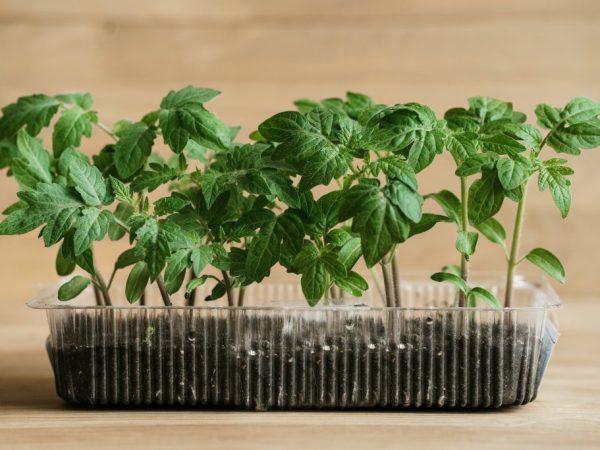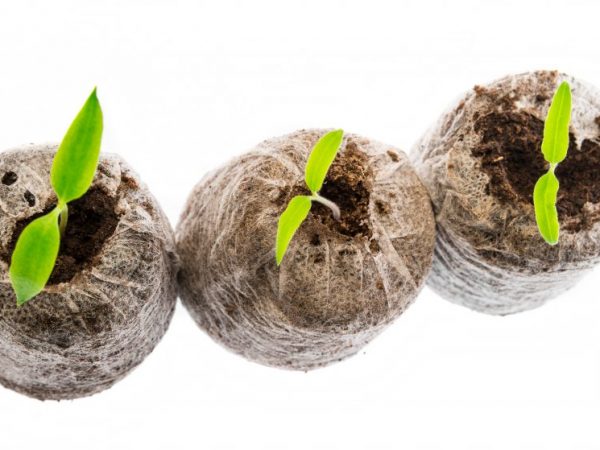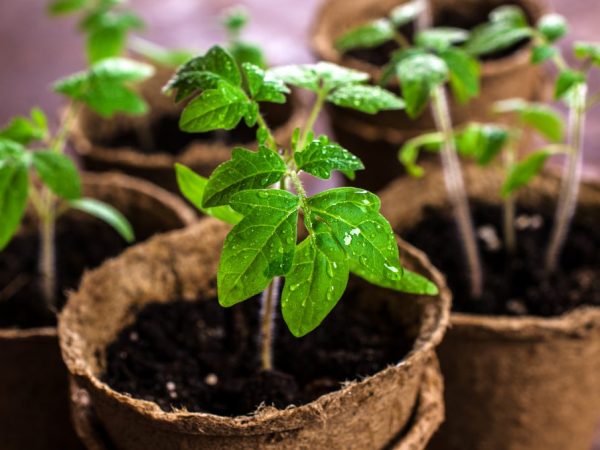Caring for tomato seedlings at home
Due to their palatability, tomatoes occupy a leading position in many cuisines. Before growing a culture at home, you need to learn everything about caring for tomato seedlings.

Caring for tomato seedlings at home
Seed preparation for sowing
It is right to start this stage with the selection of seeds. To do this, they are soaked for 10 minutes in a 4-5% solution of edible salt, and then put in clean water for further swelling. For maximum germination, seeds from last year's harvests are used. It is best if they are over 2-3 years old.
Tatiana Orlova (Candidate of Agricultural Sciences):
Duration of storage of tomato seeds is on average 5-6 years. The highest germination rate for seeds of one year of storage. It can decrease every year. Under optimal conditions, tomato seeds can remain viable for 8-10 years, but the percentage of germinating seeds will be low, and among the seedlings there will be many plants that have formed only cotyledon leaves.
Step-by-step instructions for soaking seeds:
- put a damp paper towel in a saucer;
- spread the seeds evenly and cover them with a lid so that the water does not evaporate;
- leave the seeds to swell for 10-20 hours;
- plant the seeds after the time has passed.
Some gardeners wait for the shoots to appear and only then plant the seedlings. For this, the soil must always be moist.
Seed treatment
Tomato seeds are disinfected in a number of ways before planting:
- 1% solution of potassium permanganate (potassium permanganate). The seeds are placed in a cotton cloth or gauze, kept in a warm disinfector for 20 minutes, then washed.
- Aloe juice. This method will help not only to process, but also to stimulate the growth of seeds. The seeds are kept in juice for 12 hours. The juice should be made from the aloe stalks cut two weeks before soaking.
- Fitosporin. 1% solution in which the seeds are kept for about an hour.
Tatiana Orlova (Candidate of Agricultural Sciences):
If the seeds have been stored for a long time, you can use Epin or Zircon to stimulate their germination.
Sowing seeds
Sowing tomato seeds can be carried out in the ground or any other mixture for growing. The main component of soil for a crop is soil. Gardeners choose humus and sod in equal proportions. For plants to grow well, sawdust or peat are used. By following these methods, it is easy to get healthy, quality tomato seedlings.
A mixture of coconut proved to be excellent as a soil. It has a beneficial effect on tomato cultivation. Coconut-grown plants usually have a strong root system. It is characterized by high quality and extremely fast growth.
Tatiana Orlova (Candidate of Agricultural Sciences):
Coconut soil (cocovite) is often sold in horticultural stores in the form of pressed briquettes. It is very convenient for storage, because such a briquette takes up little space, and when soaked in water, it swells and increases in volume by 7 times.
Soil disinfection
Tillage is the main point in growing seedlings. Often the life of plants and the future harvest depend on the choice of the correct disinfection. Safety measures cannot be neglected: treatment will eliminate various spores of fungi, unfavorable microbes, eggs, insect larvae, harmful worms, and it is also an excellent prevention of rot of the root collar of the seedling.
Methods for disinfecting soil for sowing:
- ignite in the oven;
- steam;
- bake in foil, in a baking sleeve;
- pour over boiling water in small portions;
- freeze;
- warm up in a microwave oven;
- soak the ground with a fungicide;
- add phytosporin to the soil.
The soil is treated in advance: 2 weeks before planting. Then it is stored in a closed bag to form a balanced microflora.
Sowing in peat tablets

Growing in peat tablets will help you do without picking
Sometimes at home, in order for the seed to sprout, sowing in peat tablets is used, which helps the gardener to ensure the cultivation of tomato seedlings without picking. The best option for tomatoes is 33-36 mm tablets in diameter, which can hold from 2 to 4 seeds. When the root system of the plant has grown stronger, it is placed in a container with a volume of half a liter along with a peat tablet.
The process of growing in tablets is familiar to gardeners. The only difference is that a grown seedling does not require picking.
Care
The answer to the question of how to care for tomato seedlings involves taking into account the observance of a number of conditions: correct lighting, temperature, humidity.
Shine
After germination, the seedling is placed in a brightly lit place. In February and March, additional lighting is needed: daylight hours should last at least 16 hours a day. The first days of sowing, it is recommended to light up for 20 hours.
Sowing and moisture
Caring for tomato seedlings is very important, therefore 90% humidity must be taken care of in advance. Humidity below 80% negatively affects the tomato. Tomatoes are difficult to recover after growth disturbances. The glass or film, under which the plants are located, is removed after 7 days. In this case, the humidity in the room should be within 70%. The film perfectly retains moisture, therefore, if you overdo it with watering, a black leg will attack the tomato.
Often, gardeners plant crops in mini home greenhouses located on windowsills. In such conditions, it is more difficult for seedlings to create normal moisture content.
To keep everything going right, you can take note of the following tips:
- an open container with water is placed next to the greenhouses to feed the seedlings with spare moisture;
- before the appearance of the first leaves, the seedlings are irrigated with water with a room sprayer.
Since it is best to sow seeds in February during the heating season, you can resort to another effective method: hang a damp towel on the radiator under the windowsill. Evaporating moisture will create excellent microclimate conditions for seedlings.
The top layer of the soil must not be allowed to dry out: the roots of young seedlings are in it.
You need to add water to the seedlings near the stalk, and while it is thin and weak, it is best to do this from a syringe.
Watering

You need to water the plants according to a specific schedule
After the appearance of the first 3-4 leaves, the seedlings are watered for the last time. Consequently, by the time of transplantation, the soil will remain moist and free-flowing.
After transplanting, the tomato is watered for another 5 days. In order for it to get developed roots, it is dived into a container with irrigation trays. After removing the tip of the taproot, the seedlings receive moisture and grow stronger.
After another 5 days, the soil is watered again, setting a schedule according to which the planting is watered every 7-10 days. If the windowsill where the mini-greenhouse is located is cold, after every 2 waterings, potassium permanganate is added to the water with which the seedlings are watered. Watering must be done in the morning.
Warmth and feeding
The first fertilization is carried out not earlier than the appearance of the first leaves of the plant.The procedure is advised to start a couple of weeks after the pick, but this largely depends on the number of future dressings, the quality of the applied soil mixture.
In the conditions of ordinary garden soil, plants immediately begin to experience a deficiency of a number of basic elements. It is not difficult to notice this: the lack of nitrogen makes the leaves yellow; the rich purple color of the stem and the lower part of the leaves indicates a lack of phosphorus; chlorosis - about a lack of iron.
First feeding
For the first introduction, chemical or natural fertilizers are used (yeast solution, banana peel, egg shell infusion, ash extract). Thus, caring for tomato seedlings is most effective.
Second feeding
It is carried out no earlier than 14 days after the first fertilization. Its composition is usually determined by the condition of the seedlings. Strong tomato seedlings can be fed with complex fertilizers. For nutritious feeding of plants, it is better to use superphosphates, dissolving them in hot water at the rate of 1 tbsp. l. for 3 liters of water.
Third feeding
The composition of this top dressing is tailored to the specific needs of the seedlings. If the seedlings look healthy, use a weak solution of universal fertilizers or refuse to feed at all.
Picking
When the seedlings are 12-14 days old, the first pick is carried out. It is at this time that the first leaves appear. For transplanting, take 200 ml containers filled with the same soil as when planting the seeds.
Some people advise to shorten the taproot by 1/3, but this procedure slows down the development of the seedlings by a week.
After 2-3 weeks, the seedlings are transplanted a second time into pots with a volume of at least 1 liter.
Tatiana Orlova (Candidate of Agricultural Sciences):
Usually tomato seedlings are grown with one pick. The second pick is rarely carried out and only when growing 60-day-old seedlings.
Preparing to disembark
Under the condition of full development, flower brushes begin to form in 1.5 months. Tomatoes require more painstaking care, as the planting begins in the ground.
If the weather makes it impossible to transplant, you should remove the first appeared flower brush and wait until a new one appears. After that, the seedlings must be planted. Healthy tomato seedlings have a small, well-developed bush with a thick stem; healthy, broad leaves; strong roots and buds ready to bloom.
We must not forget how to care for tomato seedlings. Proper care of tomato seedlings is the key to obtaining a high-quality harvest.



